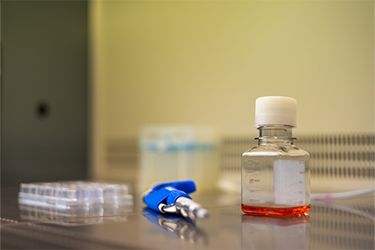Chemically Defined BalanCD HEK293 Viral Feed Boosts Viral Vector Production
By Shan Gao, Hamid Soleymani, Shahram Shahabi, Chandana Sharma, and Omid Taghavian, department of research and development, FUJIFILM Biosciences

Viral vector production using HEK293 cells is a critical step for developing cell and gene therapies and vaccines. Optimization efforts often target basal media or transfection reagents, which can require costly process changes in established systems. However, integrating a high-performance feed medium can significantly boost titers with minimal disruption to your current workflow.
A novel, chemically defined, animal component-free feed supplement has demonstrated its ability to enhance adeno-associated virus (AAV) titer across various HEK293 cell lineages, providing a 2-fold to 8-fold increase in AAV titers. The supplement is compatible with a wide array of basal media and transfection reagents and supports both suspension and adherent HEK293 cell lines. This compatibility allows for a simplified, scalable process that easily converts standard batch viral vector production to fed-batch production with minimal disruption to the existing workflow.
Furthermore, this feed has shown consistent improvement for different AAV serotypes, including AAV2, AAV5, and AAV9, demonstrating a 3-fold to 6-fold enhancement in viral titer. This performance is also scalable, proving effective in bioreactors up to the 10 L scale. Access the poster to see the data demonstrating this simple, scalable process for boosting your viral vector yields.
Get unlimited access to:
Enter your credentials below to log in. Not yet a member of Cell & Gene? Subscribe today.
